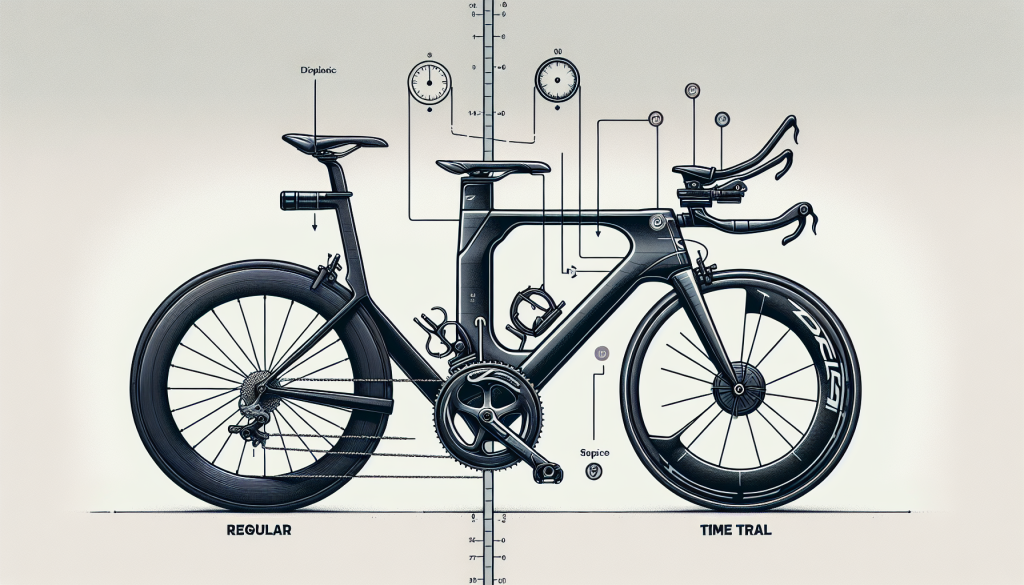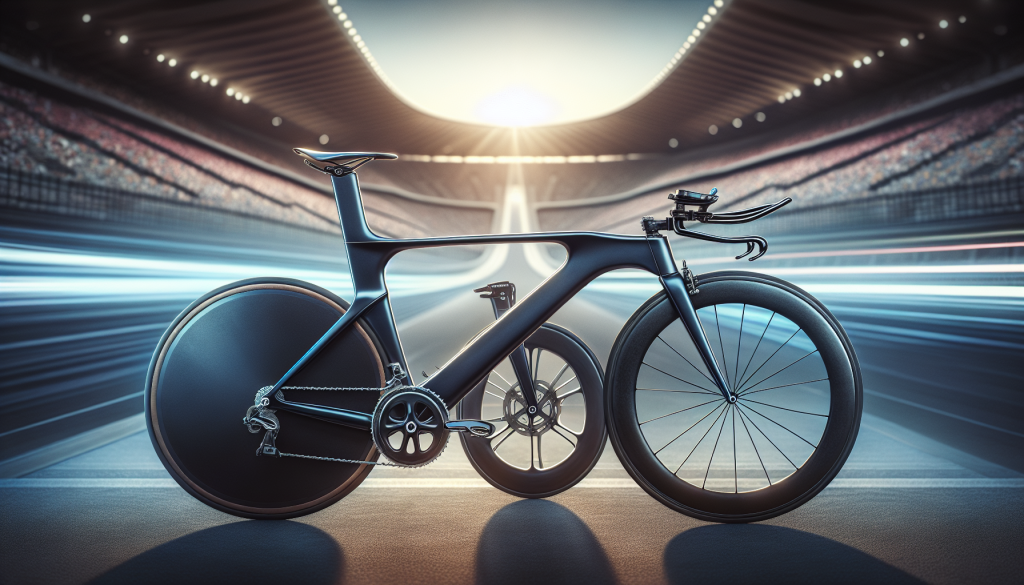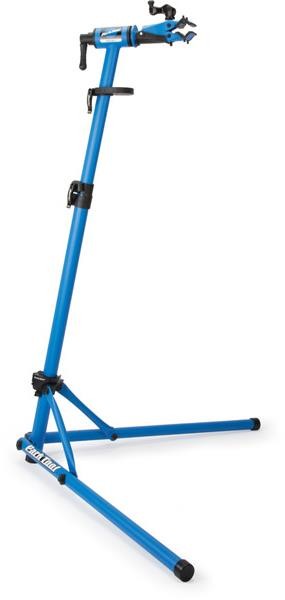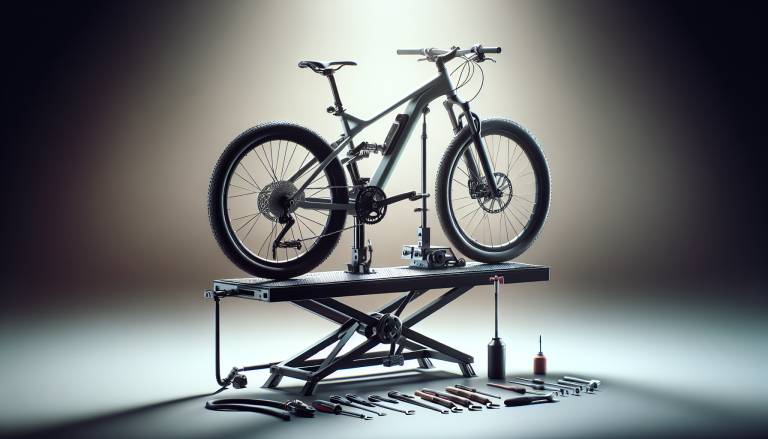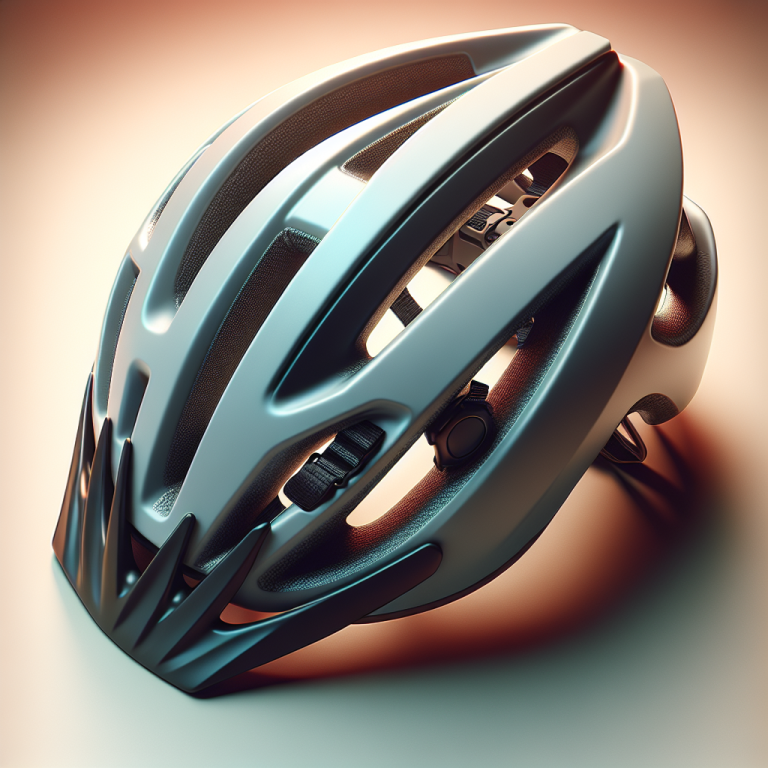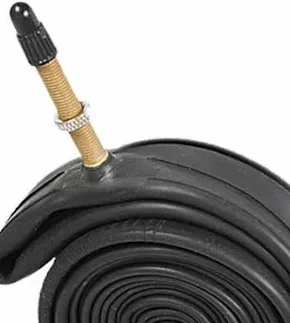Have you ever wondered how time trial bikes differ from regular road bikes? Well, you’re in luck! In this article, we’re going to take a closer look at the key differences between these two types of bicycles. From their design and geometry to the specialized components and features, we’ll uncover everything you need to know about time trial bikes and why they are the ultimate choice for speed and efficiency on the racing track. So, fasten your helmet and get ready to learn about the fascinating world of time trial bikes!
Table of Contents
ToggleFrame Design
When it comes to time trial bikes, frame design plays a crucial role in optimizing aerodynamic performance. Aero shapes are carefully crafted to reduce drag and improve airflow around the bike. These shapes are designed to minimize turbulence and create a smooth, streamlined profile. Additionally, the geometry of the frame is optimized for a more aggressive and aerodynamic position, with a steep seat tube angle and a lower front end. This allows you to present a smaller frontal area to the wind, reducing drag and helping you cut through the air more efficiently. Integrated storage solutions also play a part in frame design, allowing for sleek and aerodynamic storage options for tools, nutrition, and other essentials.
Aero Shapes
Aerodynamic shapes in time trial bike frames are often characterized by profiles that are specially shaped to reduce drag. These shapes can range from teardrop-like airfoil sections to more complex designs. The goal is to minimize the air resistance encountered as you ride, allowing you to maintain higher speeds with less effort. By carefully shaping the tubes of the frame, manufacturers are able to reduce the amount of drag created by the bike, giving you a competitive edge.
Geometry
The geometry of a time trial bike is significantly different from that of a traditional road bike. The steeper seat tube angle allows for a more forward position, which helps to optimize aerodynamics. This position shifts your weight distribution more towards the front of the bike, reducing drag and allowing you to generate more power. Additionally, the lower front end of a time trial bike enables you to adopt a more aggressive, aerodynamic posture, with your head lower and your back flatter. This position minimizes your frontal area, further reducing drag and enhancing your speed.
Integrated Storage
One of the key features of modern time trial bikes is integrated storage. These bikes are designed with sleek and aerodynamic storage solutions that minimize drag while providing convenient storage for essential items. Integrated storage options can include compartments for tools, nutrition, and other small items, all seamlessly integrated into the frame or other parts of the bike. This eliminates the need for additional bags or storage solutions that can disrupt aerodynamics and weigh you down. With integrated storage, you can keep your essentials easily accessible while maintaining optimal aerodynamic performance.
Components
While the frame is a critical factor in optimizing performance, the components of a time trial bike also play a significant role. From handlebars to wheels and brakes, each component is carefully chosen to enhance the bike’s performance in specific areas.
Handlebars
The handlebars on a time trial bike are designed to provide a more aerodynamic position and improve your control and comfort. Time trial handlebars typically feature a more extended and narrower profile, allowing you to tuck your body closer to the bike and reduce drag. Some handlebar designs incorporate adjustable armrests and extensions, allowing you to fine-tune your position for optimal comfort and aerodynamics.
Wheels
Wheels are crucial for both aerodynamics and overall performance in time trial bikes. Deep-section carbon wheels are often favored for their aerodynamic benefits, reducing drag and improving speed. These wheels are designed to slice through the air with minimal resistance, enhancing efficiency and allowing you to maintain higher speeds. However, it’s essential to consider the conditions you’ll be riding in, as crosswinds can have a significant impact on the stability of deep-section wheels.
Brakes
In time trial bikes, brakes play a vital role not only in ensuring your safety but also in optimizing aerodynamics. Rim brakes are the traditional choice for time trial bikes, providing reliable stopping power while maintaining a low profile to reduce drag. However, disc brakes are increasingly becoming popular in time trial bikes due to their superior braking performance and improved modulation. While disc brakes may add some additional weight, their benefits in terms of braking power and control can outweigh the slight aerodynamic disadvantage.
Aerodynamics
Aerodynamics is a key focus in the design of time trial bikes, as reducing drag can significantly improve your speed and efficiency. Several aspects of the bike contribute to its aerodynamic performance, including the frame tubes, fork design, and wheel choice.
Frame Tubes
The shape of the frame tubes plays a crucial role in minimizing drag and improving aerodynamics. Time trial bike frames often feature specially-shaped tubes that are designed to reduce turbulence and create a smoother airflow around the bike. Teardrop-shaped airfoil profiles are commonly used, as they effectively reduce drag by allowing the air to flow more smoothly over the frame. By optimizing the shape of the frame tubes, manufacturers can help you cut through the air with minimal resistance, maximizing your speed and efficiency.
Fork Design
The fork of a time trial bike is another important component that affects aerodynamics. Forks with specially-designed profiles and shapes can reduce turbulence and drag at the front of the bike, allowing for more efficient airflow. Some forks feature integrated brake calipers, which not only improves aerodynamics but also provides a cleaner and more streamlined look. The fork design complements the overall frame design to create a cohesive and aerodynamically optimized package.
Wheel Choice
The choice of wheels can significantly impact the aerodynamics of a time trial bike. Deep-section carbon wheels are commonly used in time trials due to their aerodynamic benefits. These wheels feature a greater rim depth, reducing drag and improving the bike’s overall aerodynamic profile. The shape and profile of the rim, as well as the number and angle of the spokes, all contribute to the aerodynamic performance of the wheels. It’s important to consider the specific race conditions and course when choosing the best wheelset for your time trial bike, as factors such as crosswinds can affect stability.
Weight
The weight of a time trial bike can have a significant impact on your performance, particularly when it comes to climbing and accelerating. Manufacturers strive to reduce weight without compromising aerodynamics, resulting in bikes that are both lightweight and aerodynamic.
Carbon Fiber
Carbon fiber is the material of choice for time trial bike frames and components due to its lightweight and strong properties. Carbon fiber frames can be designed with minimal material and carefully engineered layup patterns, allowing manufacturers to achieve a high strength-to-weight ratio. Carbon fiber components, such as handlebars, seatposts, and wheels, also contribute to the overall weight reduction of the bike. By using carbon fiber, manufacturers can create lightweight time trial bikes that are both aerodynamic and strong.
Lightweight Components
In addition to the frame, using lightweight components can further reduce the overall weight of a time trial bike. Components such as handlebars, stems, saddle, and even smaller parts like bottle cages and pedals can be chosen for their lightweight properties. By carefully selecting these components, manufacturers can help you save valuable grams, enhancing your climbing performance and overall bike handling.
Fit and Adjustability
When it comes to time trial bikes, achieving the perfect fit and adjustability is crucial for optimal performance and comfort. The ability to fine-tune your bicycle’s fit allows you to find the most aerodynamic position while maintaining comfort and power output.
Saddle Position
The position of the saddle on a time trial bike is essential for achieving an efficient and comfortable riding position. Time trial saddles are typically positioned forward relative to the bottom bracket, allowing for a more aggressive posture. The saddle height, setback, and tilt can all be adjusted to accommodate individual preferences and optimize power output. Finding the right saddle position is a balance between aerodynamics, power transfer, and personal comfort.
Handlebar Position
The handlebar position on a time trial bike can significantly affect your aerodynamics and overall comfort. Time trial handlebars are designed to provide a more aggressive and aerodynamic position, with a lower profile and narrower grip. The position of the handlebars can be adjusted in terms of height, reach, and width to achieve the optimal fit for your body dimensions and riding style. Proper handlebar positioning helps to reduce wind resistance and allows for a more comfortable and efficient riding experience.
Stem Length
The stem length on a time trial bike can have a significant impact on your riding position and overall comfort. A shorter stem length allows for a more aggressive, aerodynamic posture, with less weight on the front wheel. Conversely, a longer stem can provide a more relaxed and upright position, enhancing stability and comfort. The choice of stem length depends on your individual flexibility, riding style, and personal preferences. Proper stem length helps to optimize your riding mechanics, power transfer, and aerodynamic efficiency.
Gearing
Choosing the right gear ratios for a time trial bike is crucial for achieving optimal performance. The gear ratios, chainrings, and cassette options should be carefully considered to match the specific demands of time trial racing.
Gear Ratios
The gear ratios on a time trial bike should be chosen to provide a wide range of options while maintaining a close progression between gears. Time trial courses often feature various terrains, including flats, rolling hills, and steeper climbs. Having the right gear ratios allows you to efficiently pedal at different speeds and gradients, optimizing your power output and cadence. The choice of gear ratios depends on factors such as your fitness level, race profile, and personal riding style.
Chainrings
Time trial bikes often feature larger chainrings compared to standard road bikes to allow for higher speeds and better power transfer. The choice of chainring sizes depends on your fitness level and the specific demands of your time trial races. Larger chainrings enable you to maintain higher speeds, especially on flatter sections, while sacrificing some climbing ability. Smaller chainrings, on the other hand, provide lower gear ratios for better climbing capabilities.
Cassette
The cassette on a time trial bike should be chosen to provide a close progression of gears that matches your fitness level and race profile. Time trial cassettes typically feature smaller gear jumps, allowing for smoother transitions between gears and more efficient power transfer. The choice of cassette depends on factors such as the terrain of the time trial course, your fitness level, and your personal preferences in terms of cadence and gear selection. Proper cassette selection ensures that you have the right gear ratios for every situation, allowing you to maintain optimal speed and power output.
Comfort
Although aerodynamics and speed are paramount in time trial bikes, comfort should not be overlooked. Achieving a balance between aerodynamic efficiency and rider comfort can significantly improve your performance and overall enjoyment of the sport.
Frame Compliance
Frame compliance refers to the ability of the frame to absorb vibrations and road imperfections, providing a smoother and more comfortable ride. Many time trial bikes are designed with specific features to enhance frame compliance while maintaining aerodynamic performance. These features can include thinner seatstays, seatpost design, and specially-shaped tube profiles that dampen road vibrations. By prioritizing frame compliance, manufacturers can help you stay more comfortable for longer periods, reducing fatigue and maintaining optimal power output.
Saddle Design
Time trial saddles are designed to provide a balance between comfort and aerodynamics. They often feature a narrower and more streamlined profile compared to road bike saddles, allowing for a more aggressive riding position. The padding and shape of the saddle should be chosen to provide adequate support while minimizing pressure on sensitive areas. Finding the right saddle design can greatly enhance your comfort, allowing you to maintain your aerodynamic position over extended periods.
Tire Choice
Tire choice can significantly impact the comfort of a time trial bike. Wider tires with lower tire pressure offer more cushioning and absorb road vibrations, resulting in a smoother and more comfortable ride. However, it’s important to consider aerodynamics and rolling resistance when choosing tires. Time trial-specific tires often strike a balance between comfort and aerodynamics, with designs optimized for low rolling resistance while still providing adequate cushioning. Proper tire choice allows you to stay comfortable and in control, even over rough roads, without sacrificing too much speed.
Wheelbase and Handling
The wheelbase of a time trial bike, along with its overall handling characteristics, play an important role in your bike’s stability and agility. Finding the right balance between these factors is crucial to optimizing your performance in time trial events.
Longer Wheelbase
Time trial bikes generally have a slightly longer wheelbase compared to standard road bikes. A longer wheelbase provides increased stability, especially at high speeds, by distributing your weight more evenly between the two wheels. This stability is essential for maintaining control and confidence during time trial events, particularly on technical or winding courses. However, it’s important to strike a balance between stability and agility, as an excessively long wheelbase can compromise maneuverability, particularly in tight corners or during quick accelerations.
Stability vs. Agility
Finding the balance between stability and agility is crucial when it comes to time trial bikes’ handling characteristics. While stability is important for maintaining control and confidence at high speeds, agility allows for quick accelerations and responsive handling. The specific balance between stability and agility varies depending on personal preference and the demands of the race course. Manufacturers carefully consider factors such as frame geometry, fork design, and wheelbase length to optimize the handling characteristics of time trial bikes, allowing you to navigate corners and changes in terrain with precision and ease.
Braking Performance
Braking performance is another important aspect of time trial bikes, ensuring that you can safely control your speed and navigate technical sections of the race course. The choice of brakes can significantly impact your ability to brake effectively and confidently.
Rim Brakes
Rim brakes have been the traditional choice for time trial bikes, offering reliable and efficient braking performance. Rim brakes work by applying friction to the rim’s braking surface, allowing you to slow down and stop the bike. They are lightweight and provide excellent modulation, allowing for precise speed control. However, the aerodynamic design of time trial bikes can affect rim brake performance due to the positioning of the brake calipers and potential aerodynamic interference. Additionally, rim brakes can be affected by wet conditions, reducing braking performance.
Disc Brakes
Disc brakes are becoming increasingly popular in time trial bikes due to their superior braking performance and modulation. Disc brakes use a rotor attached to the wheel hub and a caliper that applies pressure to the rotor, providing consistent and powerful braking force. The advantages of disc brakes include improved braking performance in both wet and dry conditions, better heat dissipation, and minimal impact on aerodynamics due to the positioning of the calipers. The added weight of disc brake systems is often offset by the increased control and confidence they provide, particularly in technical and challenging race courses.
Price Range
Time trial bikes come in a range of price points to suit different budgets and performance needs. Here’s a breakdown of the different price ranges and what you can expect at each level.
Entry-level
Entry-level time trial bikes are designed to provide a cost-effective option for those just starting in the sport. These bikes offer a solid platform for training and entry-level time trial events. While they may not have all the cutting-edge features of higher-end models, entry-level time trial bikes still prioritize aerodynamics, comfort, and performance. They often feature aluminum frames, basic component groupsets, and entry-level wheels. However, they can provide an excellent entry point into the sport and allow you to experience the thrill of time trial racing without breaking the bank.
Mid-range
Mid-range time trial bikes offer a balance between performance and affordability. These bikes often feature carbon fiber frames, improved component groupsets, and upgraded wheels compared to entry-level options. They provide a significant step up in terms of weight, aerodynamics, and overall performance. Mid-range time trial bikes are suitable for competitive athletes and enthusiasts looking to improve their performance without investing in high-end, professional-grade equipment.
High-end
High-end time trial bikes represent the pinnacle of performance and technology in the sport. These bikes are designed for professional and elite-level athletes who demand the absolute best in terms of aerodynamics, weight, and performance. High-end time trial bikes feature advanced carbon fiber frames, top-of-the-line component groupsets, and cutting-edge wheelsets. They often incorporate the latest innovations in frame design, aerodynamics, and integration. While high-end time trial bikes can come with a significant price tag, they offer unmatched performance and are specifically designed to help you achieve your best results in races against the clock.
In conclusion, time trial bikes differ from traditional road bikes in several key areas, with a primary focus on aerodynamics, weight, fit, and performance. From the frame design and components to braking performance and wheel choice, every aspect of a time trial bike is optimized to help you cut through the wind, maintain high speeds, and achieve your best results. Whether you’re an aspiring time trialist looking to enter your first event or a seasoned professional aiming for the podium, a well-designed and properly fitted time trial bike can give you the edge you need to excel in this challenging and exciting discipline.

